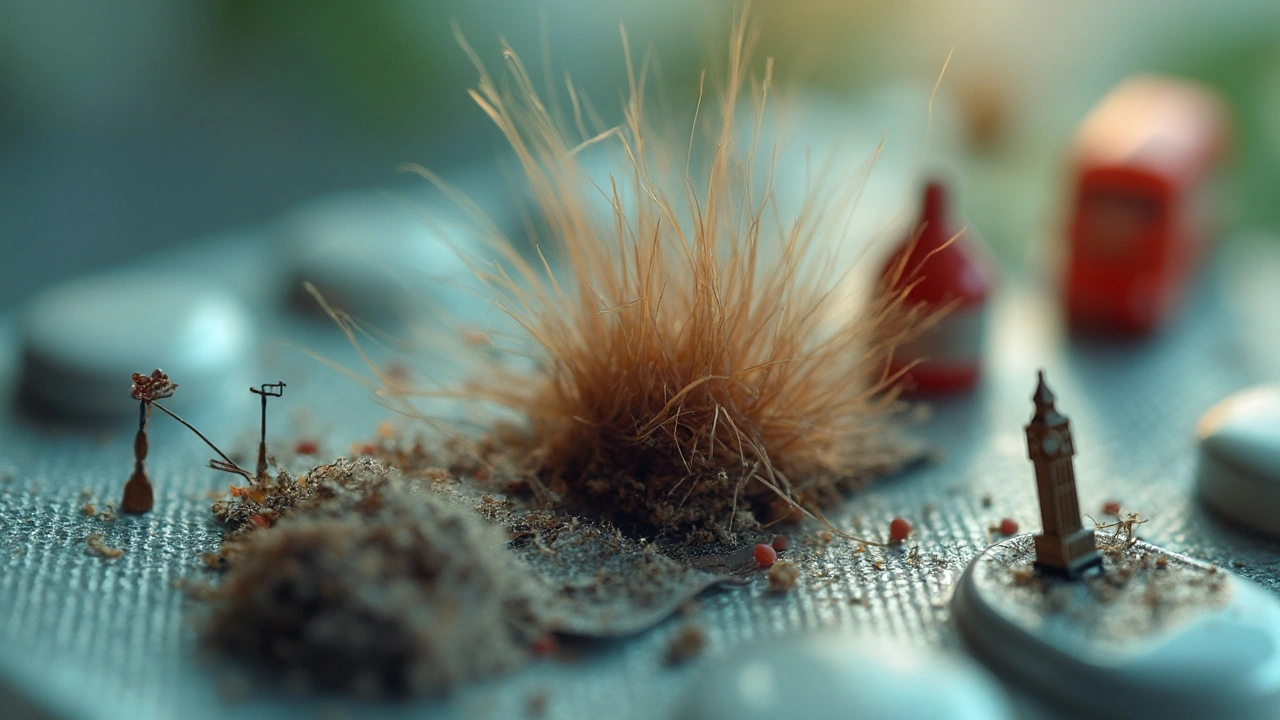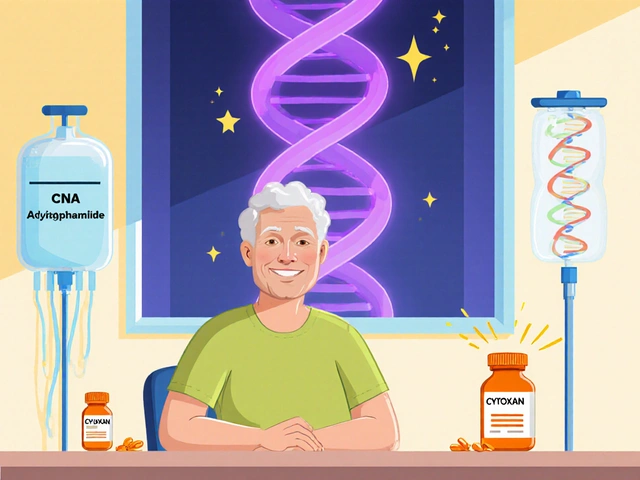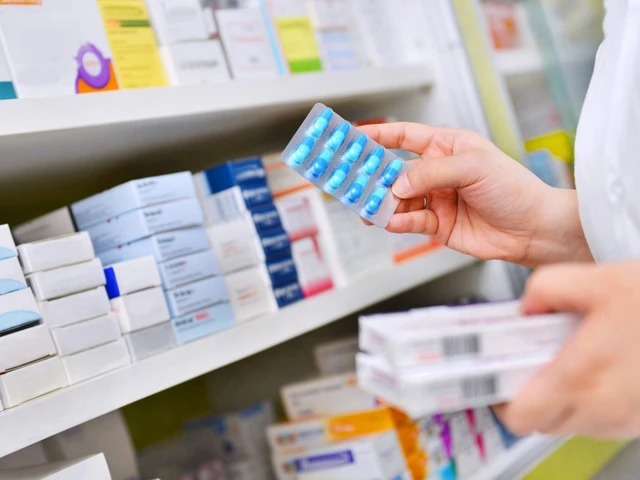Being handed a prescription to save your joints, or your life, is a trade you usually make without blinking. But when that prescription quietly starts thinning your hair, the emotional fallout is real—and makes you realize how much hair is tied to self-image. If you’re on DMARDs (disease-modifying anti-rheumatic drugs) and seeing more scalp than you’d like, you’re definitely not alone. Dermatologists see this side effect in their offices constantly, but there’s good news: new treatments are popping up, and the classics are evolving too. The best results come from understanding what’s really happening in your hair follicles and stacking the right tactics—sometimes more science fiction than old wives’ tales. Let’s pull back the curtain.
Why DMARDs and Other Drugs Cause Alopecia: What’s Really Going On?
The relationship between medications like methotrexate, leflunomide, or sulfasalazine and hair loss is pretty sneaky. These drugs tinker with your immune system, which is great if you’re fighting rheumatoid arthritis or lupus, but not so great for your hair. What actually happens? Most of these meds interrupt the growth cycle of hair, kicking strands out of the active phase (anagen) earlier, leading to more falling out at once (hello, telogen effluvium).
The exact impact depends on the drug, dose, and your own genetic background. For example, methotrexate depletes folate, which can cripple fast-dividing cells like those in hair follicles. Sulfasalazine can disrupt nutrient absorption, and leflunomide interferes with DNA synthesis. Among patients on DMARDs, up to 15% report noticeable hair thinning—but dermatologists know this stat is likely higher since many chalk it up to aging or stress instead of meds.
What’s really fascinating: the loss isn’t always permanent. For lots of people, hair starts coming back once the drug is stopped or adjusted, though sometimes, it needs a proper nudge to regrow. The catch? If the underlying inflammation from your disease isn’t controlled, that itself can lead to more hair shedding. It’s always a balancing act.
For a closer look at how drugs like sulfasalazine lead to hair issues, check out this detailed breakdown of sulfasalazine and hair loss—it really connects the dots for patients wondering if it’s their medication or something else.
So if you’re noticing more hair in the drain and you’re on any immunomodulating drug, don’t shrug it off or just blame your shampoo. Recognizing the pattern early lets you jump on fixes much sooner.
Dermatologist Picks: Topical Treatments and Oral Prescriptions
Most doctors start with the basics—because they actually work. The gold standard? Minoxidil (yup, that’s Rogaine). It’s FDA-approved and doesn’t mess with your hormones. Here’s why it’s the main event: minoxidil increases blood flow directly to the follicles, revving up their output even in the presence of drugs that might be slowing things down. The foam or solution is used once or twice daily, and yes, it does work for men and women.
A small but telling 2023 trial out of Johns Hopkins tracked DMARD users with new-onset hair thinning. Within six months of using 5% minoxidil foam, nearly 65% noticed thicker, denser hair—the kind of numbers you actually notice in the mirror. Real talk: the trick is to catch the shedding early, because the longer the hair follicles sit dormant, the lazier they become. For the best odds, dermatologists recommend pairing minoxidil with gentle, sulfate-free shampoos and skipping daily heat styling while your hair is in recovery mode.
For patients who just aren’t seeing results or whose hair loss feels aggressive, oral treatments can enter the picture. Spironolactone is sometimes used for women with persistent DMARD-triggered shedding, especially if there’s a hormonal component. Dermatologists will check for underlying thyroid issues, iron levels, and vitamin D, since these all add fuel to the fire when out of balance.
Oral minoxidil—a tiny dose compared to its blood pressure form—is gaining traction. It’s not for everyone, and it comes with possible side effects like slight swelling or dizziness, but for some folks, it’s tipped the scales completely. The choice between topical and oral always comes down to a personal conversation with your doc, factoring in risks and the type of hair loss you’re dealing with.

Platelet-Rich Plasma (PRP) and Other In-Office Procedures
If you’re more the “let’s leave it to the pros” type, PRP (platelet-rich plasma) is the rising star of dermatologist offices for drug-induced hair loss. Here’s the real lowdown: they draw your blood, spin it in a centrifuge, snag the part loaded with growth factors, and inject that right into your scalp. The goal? To wake up sluggish follicles by packing them with platelets that scream “grow.”
One thing dermatologists want you to know—PRP isn’t sci-fi. A 2022 meta-analysis pooled results from nine studies on PRP in patients with drug-induced alopecia and reported average increases of 27% in hair density after just three sessions. Side effects are minimal (think soreness, a little redness), and because the solution comes from your own blood, the risks of reactions are tiny.
Other in-office add-ons: low-level laser therapy (think red light helmets or caps) is showing real promise. It works by sending specific wavelengths of light into follicles to reduce inflammation and amp up cellular activity. For a subset of patients on DMARDs, adding this at home (20 minutes a few times a week) seems to accelerate results from topical or oral therapies.
Microneedling, done monthly with a dermatologist, is another growth kicker. Tiny needles create micro-injuries that ramp up healing and draw growth factors to the scalp. Bonus points: when you combine microneedling with minoxidil, study after study reports thicker, fuller regrowth compared to either alone.
Nutrition, Supplements, and Lifestyle Hacks for Better Regrowth
Here’s the part most people skip but shouldn’t—fixing your nutrition game can seriously tilt odds in your favor. Why? Because a lot of DMARDs (especially methotrexate and sulfasalazine) deplete B vitamins, folate, and iron, which all play a starring role in the hair growth process.
Table: Key Nutrients Often Depleted by DMARDs
| Nutrient | Function for Hair | DMARDs That Deplete |
|---|---|---|
| Folate | Cell division, follicle health | Methotrexate, Sulfasalazine |
| Iron | Oxygen delivery, prevents shedding | Methotrexate, Leflunomide |
| Biotin | Keratin infrastructure | All DMARDs indirectly |
| Vitamin D | Improves follicle cycle | Variable, but often low in autoimmune |
If your bloodwork flags you as low in any of these, doctors usually start you on supplements. Folate especially is prescribed alongside methotrexate—the dose matters, and you’ll need regular check-ins. “Biotin gummies” might be trendy, but those only help if your levels are actually low. Iron is non-negotiable if you’re even the tiniest bit anemic.
Pro tip: anti-inflammatory diets (think less sugar, more leafy greens, omega-3-rich fish, and nuts) might double-dip by calming autoimmune flares and supporting your follicles. And, while it sounds simple, dropping stress where you can actually reduces the hormone cortisol, which is known to worsen telogen effluvium. Regular exercise, quality sleep, and scalp massages (seriously—five minutes with your fingertips every night) can all quietly boost your results.

Sorting Out Fact From Fiction: What Really Works and What to Skip
When your hair is thinning out, the hunt for cures can get wild fast. Let’s bust some myths and zero in on solutions that have a stamp of approval from actual dermatologists.
- Minoxidil: Backed by decades of research, and the most bulletproof option for most Drug-Induced Alopecia.
- PRP: Works best when started early and combined with topical therapies. Don’t expect miracles in just one treatment; a series is always needed.
- Low-Level Laser Therapy: Promising and especially good as a booster, but not a solo act. Best used alongside standard treatments.
- Supplements: Don’t trust “hair growth pills” unless you know your levels are low. Save your money, unless labs show folate, iron, or D deficiencies.
- Shampoos with Caffeine or Biotin: Fine as part of a gentle haircare routine, but don’t expect them to reverse serious shedding. They’re support players, not lead actors.
- Hair Oils, Onion Juice, Homemade Potions: There’s zero dermatologist evidence for these. At best, they’ll condition the hair you have left; at worst, they’ll clog follicles and irritate your scalp.
One more thing: talk openly to your prescribing doctor if you notice clumps of hair on your pillow or scalp that’s suddenly see-through. Sometimes, simply tweaking your DMARD dose or type can steady the fallout. Don’t make hair loss management a secret struggle—no dermatologist will judge how much it matters to you.
If you find yourself discouraged after trying one or two things with no luck, remember: it’s usually the combo approach, not a miracle single product, that gets people real results. Keeping a hair diary (literally writing down what you try and what you see month to month) helps you—and your doc—spot trends and tweak the plan.
Drug-induced hair loss isn’t a forever sentence. New advances come out every year, and the more you know about what works (and what’s hype), the faster you’ll see progress. If you’re determined to DMARDs hair loss in check, stack the tools, trust dermatologist advice, and stay patient. Your follicles are paying attention.



Emmy Segerqvist
20 May / 2025OMG!!! This DMARD hair‑loss saga is a total nightmare!!!